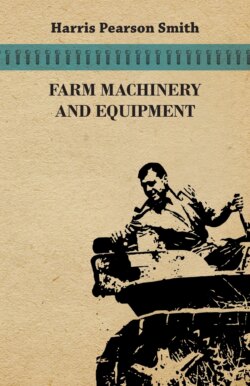Читать книгу Farm Machinery and Equipment - Harris Pearson Smith - Страница 4
На сайте Литреса книга снята с продажи.
ОглавлениеFarming
Agriculture, also called farming or husbandry, is the cultivation of animals, plants, or fungi for fibre, bio-fuel, drugs and other products used to sustain and enhance human life. Agriculture was the key development in the rise of sedentary human civilization, whereby farming of domesticated species created food surpluses that nurtured the development of civilization. It is hence, of extraordinary importance for the development of society, as we know it today. The word agriculture is a late Middle English adaptation of Latin agricultūra, from ager, ‘field’, and cultūra, ‘cultivation’ or ‘growing’. The history of agriculture dates back thousands of years, and its development has been driven and defined by vastly different climates, cultures, and technologies. However all farming generally relies on techniques to expand and maintain the lands that are suitable for raising domesticated species. For plants, this usually requires some form of irrigation, although there are methods of dryland farming. Livestock are raised in a combination of grassland-based and landless systems, in an industry that covers almost one-third of the world’s ice- and water-free area.
Agricultural practices such as irrigation, crop rotation, fertilizers, pesticides and the domestication of livestock were developed long ago, but have made great progress in the past century. The history of agriculture has played a major role in human history, as agricultural progress has been a crucial factor in worldwide socio-economic change. Division of labour in agricultural societies made (now) commonplace specializations, rarely seen in hunter-gatherer cultures, which allowed the growth of towns and cities, and the complex societies we call civilizations. When farmers became capable of producing food beyond the needs of their own families, others in their society were freed to devote themselves to projects other than food acquisition. Historians and anthropologists have long argued that the development of agriculture made civilization possible.
In the developed world, industrial agriculture based on large-scale monoculture has become the dominant system of modern farming, although there is growing support for sustainable agriculture, including permaculture and organic agriculture. Until the Industrial Revolution, the vast majority of the human population laboured in agriculture. Pre-industrial agriculture was typically for self-sustenance, in which farmers raised most of their crops for their own consumption, instead of cash crops for trade. A remarkable shift in agricultural practices has occurred over the past two centuries however, in response to new technologies, and the development of world markets. This also has led to technological improvements in agricultural techniques, such as the Haber-Bosch method for synthesizing ammonium nitrate which made the traditional practice of recycling nutrients with crop rotation and animal manure less important.
Modern agronomy, plant breeding, agrochemicals such as pesticides and fertilizers, and technological improvements have sharply increased yields from cultivation, but at the same time have caused widespread ecological damage and negative human health effects. Selective breeding and modern practices in animal husbandry have similarly increased the output of meat, but have raised concerns about animal welfare and the health effects of the antibiotics, growth hormones, and other chemicals commonly used in industrial meat production. Genetically Modified Organisms are an increasing component of agriculture today, although they are banned in several countries. Another controversial issue is ‘water management’; an increasingly global issue fostering debate. Significant degradation of land and water resources, including the depletion of aquifers, has been observed in recent decades, and the effects of global warming on agriculture and of agriculture on global warming are still not fully understood.
The agricultural world of today is at a cross roads. Over one third of the worlds workers are employed in agriculture, second only to the services sector, but its future is uncertain. A constantly growing world population is necessitating more and more land being utilised for growth of food stuffs, but also the burgeoning mechanised methods of food cultivation and harvesting means that many farming jobs are becoming redundant. Quite how the sector will respond to these challenges remains to be seen.
